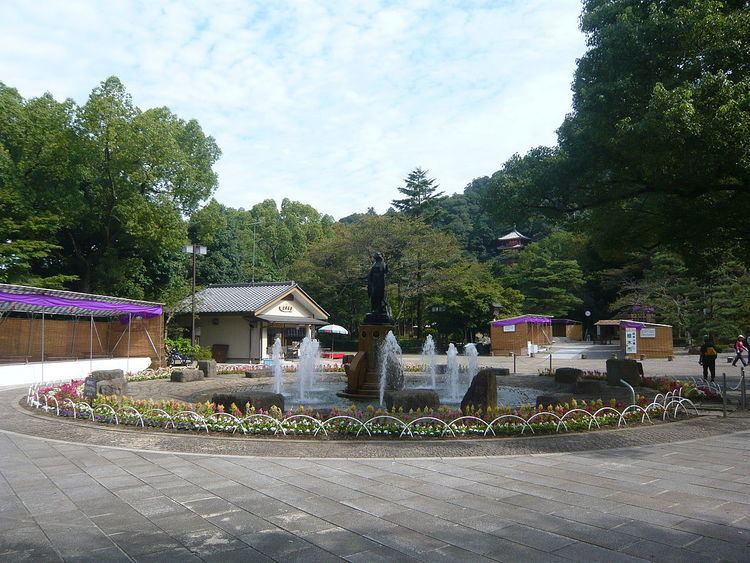Phone +81 58-214-2182 | ||
 | ||
Hours Open today · 9:30AM–4PMTuesday9:30AM–4PMWednesday9:30AM–4PMThursday9:30AM–4PMFriday9:30AM–4PMSaturday9:30AM–4PMSunday9:30AM–4PMMonday(Vernal Equinox Day)Closed Similar | ||
Gifu Park (岐阜公園, Gifu Kōen) is a public park located at the base of Mount Kinka in the city of Gifu, Gifu Prefecture, Japan. Inside the park, there are many attractions, including Gifu Castle, Mount Kinka, the Mt. Kinka Ropeway, the Gifu City Museum of History, the Eizō & Tōichi Katō Memorial Art Museum, and the Nawa Insect Museum. In 2006, it was selected as one of Japan's Top 100 Public Historical Parks.
Contents
- Gifu park mt kinka japan shrine castle 2016 01 mvi 3890
- History
- Park timeline
- Events
- Current facilities
- Former facilities
- Access
- References
Gifu park mt kinka japan shrine castle 2016 01 mvi 3890
History
The area that makes up Gifu Park has a long and important role in the history of Gifu City. Though Mount Kinka was strategically important for military purposes, living in the castle atop the mountain would have made daily life very difficult. As such, many important rulers built their main residences at the base of the mountain in modern-day Gifu Park.
One of those residences used to belong to Oda Nobunaga. It was called Senjō-jiki (千畳敷), which literally means "one-thousand tatami mats." The residence was so large that it covered approximately two-thirds of the present day park. Much was known about the residence because the Portuguese Jesuit Missionary Luis Frois wrote about it extensively in his journals during his time visiting with Nobunaga, even going so far as to say that Gifu was "as bustling as Babylon." However, until excavation began in 1984, it was unknown whether or not this was actually Nobunaga's Senjō-jiki.
Additionally, the park has also been home to a zoo, an aquarium, the Gifu Prefectural Library, and the Gifu City Science Museum. However, all those facilities have been closed or moved.
Park timeline
Events
Gifu Park plays host to numerous events throughout the year. Two popular events are the Gifu Park Illumination, which runs from the end of July to the end of August, and the Chrysanthemum Doll and Flower Festival, which runs from the end of October to the end of November. The park is also known for its smaller events throughout the year, too, including firefly viewing in the summer.
Current facilities
Former facilities
Access
From JR Gifu Station (Bus Platform 11) or Meitetsu Gifu Station (Bus Platform 4), board a bus operated by Gifu Bus that is heading towards Nagara. Get off the bus at "Gifu Koen, Rekishi Hakubutsukan-mae," approximately 15 minutes from the train stations.
